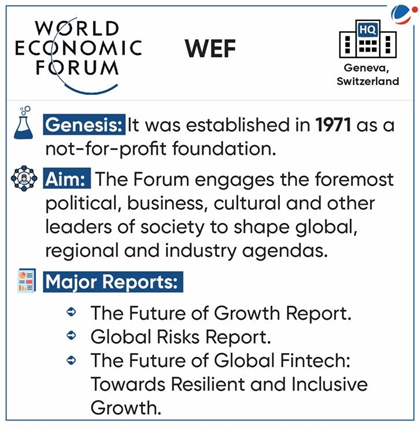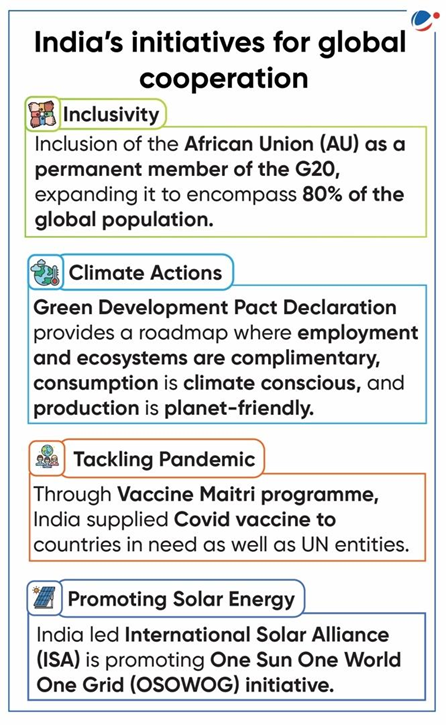Why in the News?
World Economic Forum (WEF) in collaboration with McKinsey & Company released the report.
About Global Cooperation Barometer
- It is a tool for leaders to better understand the contours of cooperation broadly along five dimensions using 42 indicators of global connection (see the table).
- These five pillars were chosen because of their impact on global development and their explicit dependence on cooperative efforts among nations and economies.
- It measures cooperation from 2012 through 2022 and could help business and government stakeholders to:
- Face global challenges: Such as rising global temperatures, growing forcible displacement (42 million in 2012 to 82 million in 2020), threats of a pandemic and the risks associated with new, unregulated technologies.
- Unlock new opportunities: For example, Generative AI has the potential to contribute as much as $2.6 trillion to $4.4 trillion to the global economy.

The 5 pillars of Global Cooperation Barometer
Pillars | About | Observation |
Trade and capital | Promote global development and resilience |
|
Innovation and technology | Accelerate innovation and beneficial technological progress |
|
Climate and natural capital | Support the resolution of climate and natural capital challenges |
|
Health and wellness | Enable global population to lead longer and better lives |
|
Peace and security | Prevent and resolve conflicts |
|

Report suggested following measures to foster global cooperation:
- Practice coopetition: Stakeholders should focus on identifying avenues toward advancing shared interest that can exist despite competition – a practice known in the private sector as “coopetition”.
- Raise the capabilities of management: An understanding of both global connections and geopolitical realities – and implications for the business – should be a core competency for every multinational corporation C-suite executive (company's top management positions).
- Think diversifying, not decoupling: Greater diversification not only strengthens resilience, but also promote a more inclusive trading system and economy. This could further enable broader participation by various countries.
- Promote innovation: Commit to greater cross-border collaboration through
- foundational R&D,
- international student exchanges,
- cross-border patent applications,
- simplified approaches to global regulation of frontier technologies such as Generative AI.
- Bolstering cooperation to achieve interdependent climate objectives: Spending must focus on creating incentives to deploy lower-cost solutions (e.g. solar/wind power) and reducing the costs of expensive solutions (e.g. passenger battery EVs; onshore wind power).
- Intensifying pandemic era cooperation: Global health norms and infrastructure established during and before the pandemic can be preserved to improve health outcomes, address future pandemics, aging populations, and chronic conditions.
- Support for vulnerable populations: By managing the integration of refugee populations from conflict zones, identifying mechanisms to support impacted individuals in conflict zones.
- Cyber collaboration: Integrating public and private sector actors to boost sharing of data flows on cybersecurity threats.



